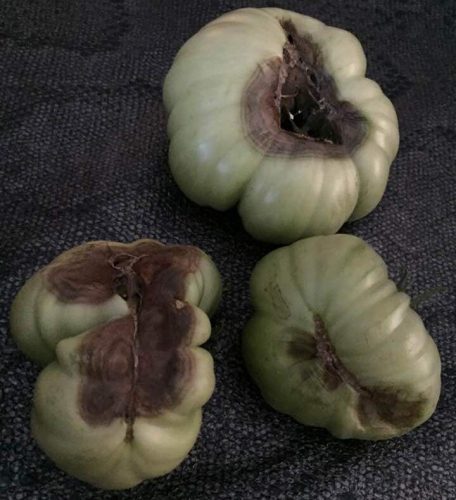Blossom end rot is not a fungus or disease, but the result of unbalanced supply of water and calcium.
Blossom end rot Not a fungus or disease, but the result of unbalanced supply of water and calcium.
Tomatoes, paprika and eggplants are susceptible to blossom end rot: brown spots appear on the underside or top of the tomatoes. Blossom end rot occurs because the mineral balance in the soil is out of balance; thus, it is a deficiency disease. It occurs in hot weather, when the plant evaporates quite a bit of water, so the calcium level in the plant lowers to the point that the cell walls weaken and the cells leak. The brown spots are the result.
Where to find
- Tomato
- Paprika
- Eggplant
Control
Blossom end rot is unfortunately irreversible. Prevent further damage by repairing the calcium deficiency: provide the soil with lime or a lime-enriched fertilizer. Aim for a pH of 6.5.
Prevention
At the end of winter, check the pH level of the soil: if it is too low, sprinkle lime or fertilize with a lime-enriched fertilizer. Aim for a pH of 6.5 (very slightly acidic, in other words).
With greenhouse cultivation, the soil is prone to pH fluctuations due to intensive use, so check the pH regularly.
In addition, water at set times, provide adequate fertilizer and give some lime during fruit growth, but make sure the pH does not increase. Ensure proper aeration.

